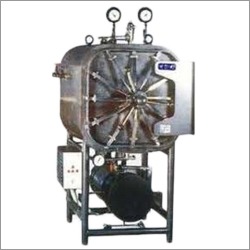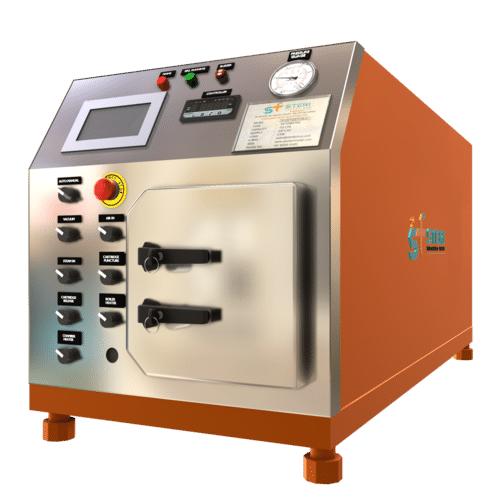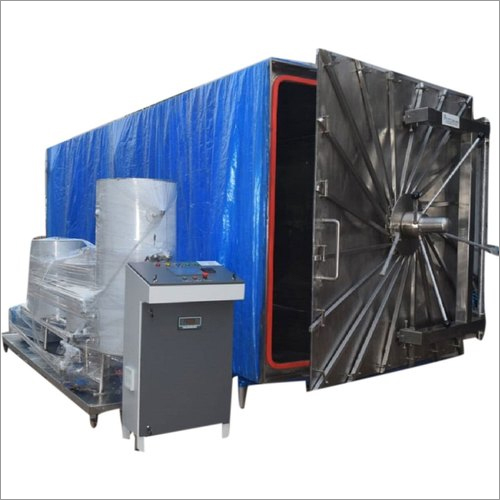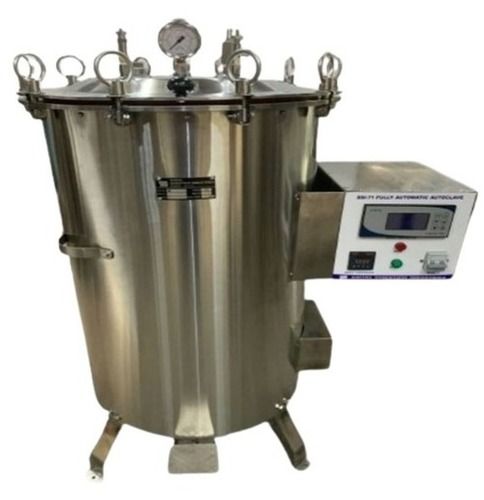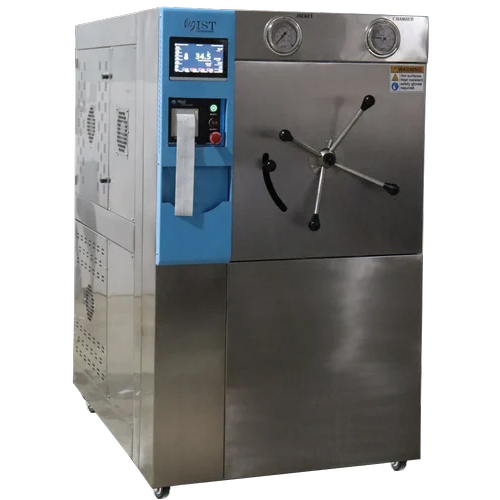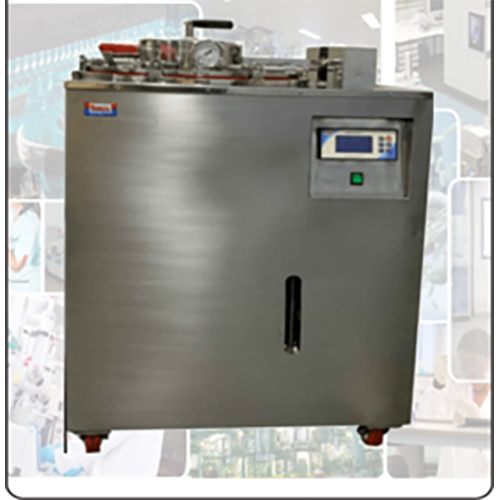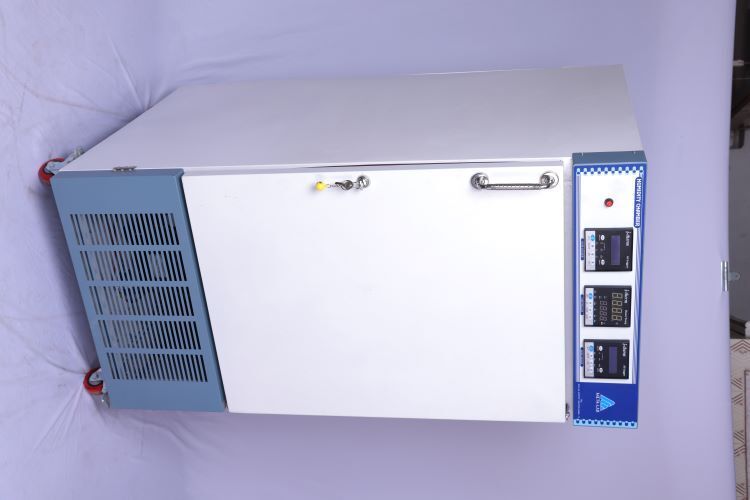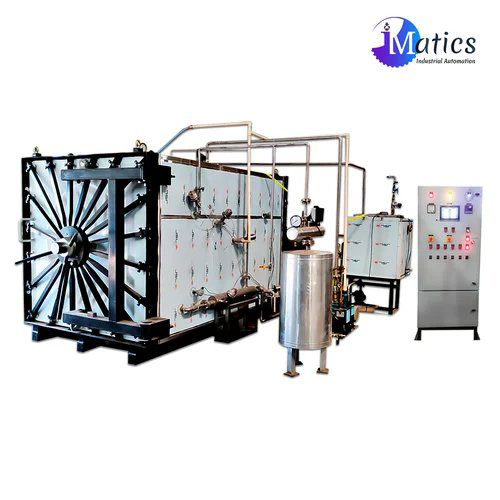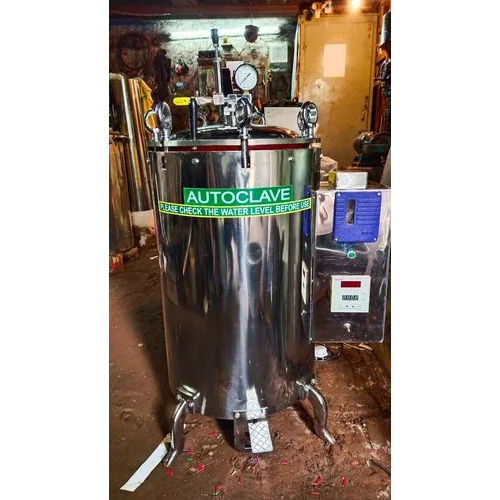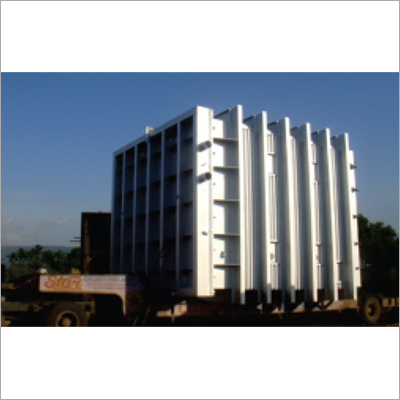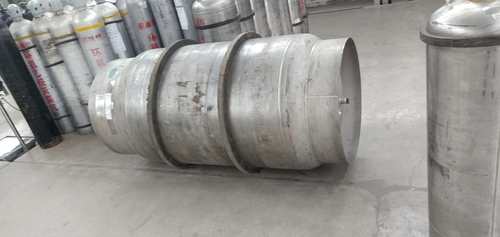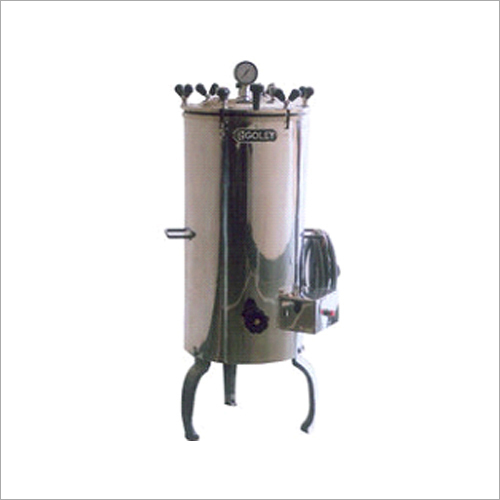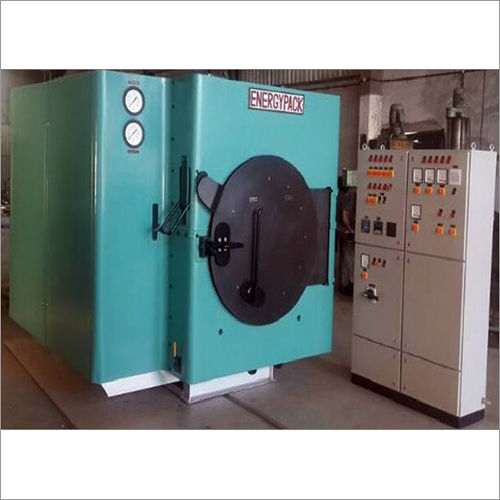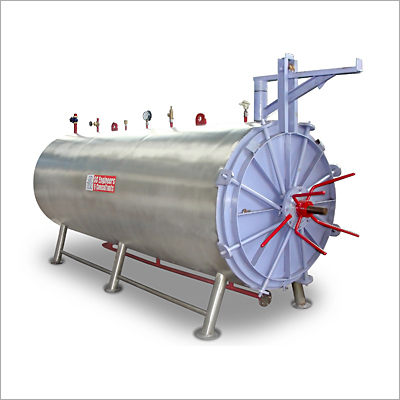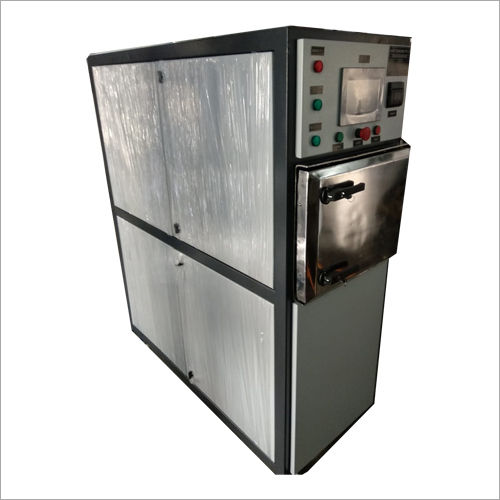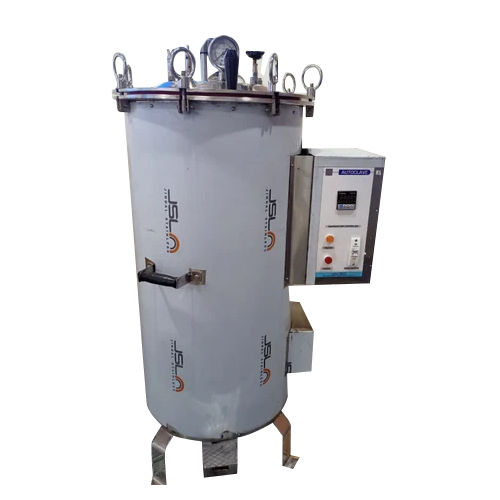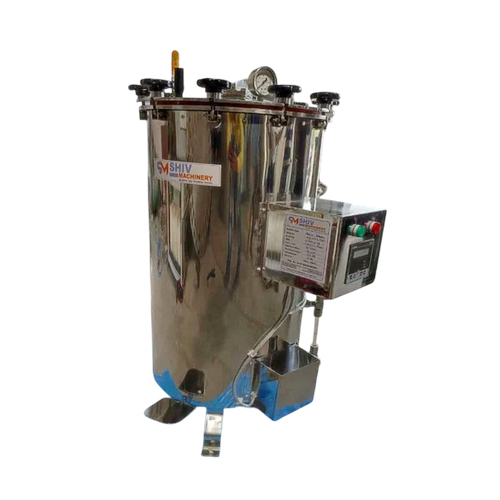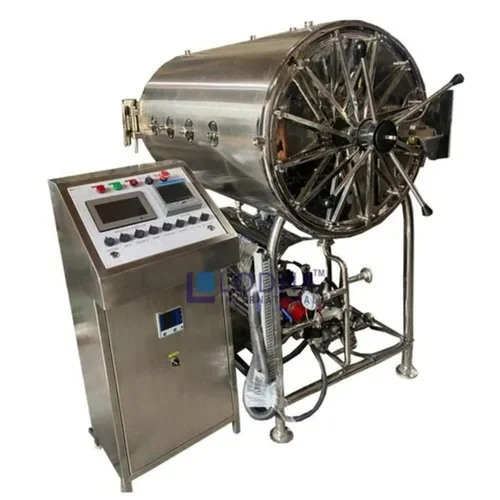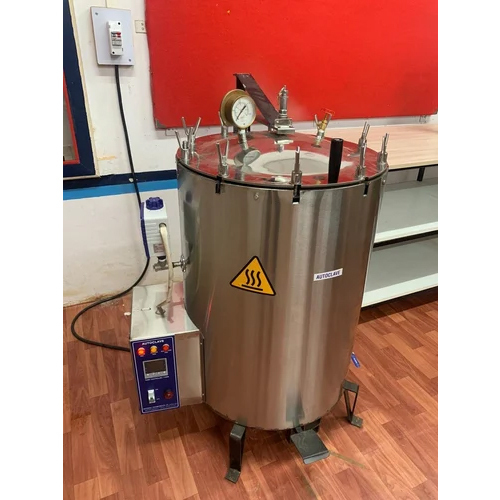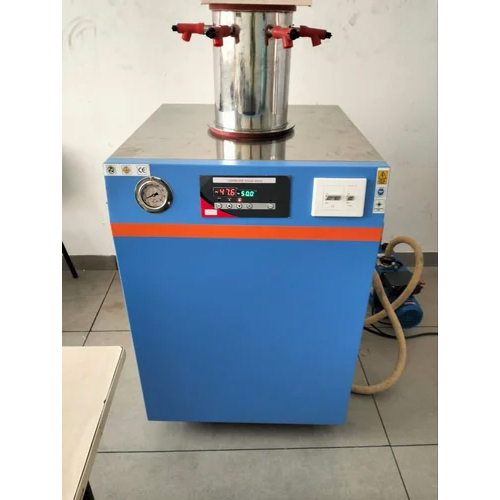Autoclaves & Sterilizers
(2639 products)Rectangular Horizontal Autoclave - Capacity: 35-213 Ltr
Price: 685000 INR/Unit
MOQ1 , Unit/Units
Operate MethodManual, Fully Automatic, Semi Automatic
MaterialStainless Steel
Voltage230 Volt (v)
Capacity35-213 Ltr
ColorSliver
UsageIndustrial
Patel Scientific Instruments Pvt. Ltd.
Ahmedabad
Industrial Autoclave With Quick Opening Doors
MOQ1 Set/Sets
Payment TermsTelegraphic Transfer (T/T), Western Union, Paypal, Others
Delivery Time1 Week
Sample PolicyContact us for information regarding our sample policy
Air Sterilizer - Compact ABS Plastic Design | Noise-Free Operation, Self-Cleaning Filter, High Power Air Ionizer, Easy Mobility
Payment TermsCash on Delivery (COD), Cheque
Sample AvailableYes
Main Export Market(s)Eastern Europe, Asia
Hospital Eto Sterilizer - Chamber Size: 50 To 220 Liter
Price: 350000.00 INR/Set
MOQ1 Set/Sets
UsageHospital, Healthcare & Pharma
MaterialStainless Steel
TypeGas Sterilization Equipments
Chamber Size50 to 220 Liter
Compressed Air6 CFM
Door TypeHinged Type
Industrial Eto Sterilizer Chamber Size: 2-720 Qubic Feet
Price Trend: 305000.00 - 800000.00 INR/Piece
MOQ1 Unit/Units, Unit/Units, Unit/Units
Capacity55 liter, 85 liters, 110 liters
MaterialStainless steel
Dimension (L*W*H)As per customer requirement
Operate MethodFully Automatic
ClassificationETO STERILIZER
ApplicationHospitals
Industrial Eto Sterilizer Chamber Size: 450L
Price: 1800000 INR/Unit
MOQ1 Unit/Units
Product TypeETO Sterilizer
Voltage220 Volt (v)
MaterialSS
ApplicationHospital
TypeOther, Single Phase
Chamber Size450L
Vertical Autoclave Standard - Capacity: 35 Ltr
Price: 165082 INR/Unit
MOQ1 Unit/Units
Capacity35 Ltr
ColorSilver
UsageIndustrial
Operate MethodSemi-Automatic
Dimension (L*W*H)A~12aEUR x 20aEUR Inch (in)
Power220 Volt (v)
High Pressure Autoclave - SS 316 & Hastelloy C | 100 ml to 100 Litre Capacity, Up To 100 Bar Pressure, Advanced Safety Features, Efficient Reaction for R&D Applications
Product DescriptionBanking on the individual requirements of the clients, we are the popular manufacturer and supplier a wide range of High Pressure Autoclaves in Mumbai, Maharashtra, India. These are performance based and are durable in nature. Our entire product range is functionally advanced and is configured with
Hra-Plus Rectangular Autoclave - Color: Silver
Price: 1500000 INR/Unit
MOQ1 Unit/Units
ColorSilver
UsageIndustrial
MaterialMild Steel
Operate MethodAutomatic
Voltage220-440 Volt (v)
World Invent Scientific Technology Private Limited
Vasai
Sterilizers - Superior-Grade Raw Material, Advanced Technology Design | Reliable Performance, Diverse Applications
Product DescriptionOwing to our proficiency in this domain, we have been able to satisfy the variegated requirements of the clients by manufacturing, exporting and supplying a wide array of Sterilizers from Surat, Gujarat, India. Our offered Sterilizers are designed and manufactured using superior-grade raw material
Silver Hmg Ce Slfa Series Single Lever Autoclave
Price Trend: 100000.00 - 700000.00 INR/Unit
MOQ1 Unit/Units
Product TypeSingle Lever Autoclave
ColorSilver
UsageIndustrial
MaterialStainless Steel
Humidity Chamber - High-Performance Stainless Steel, Adjustable Temperature Control, Precision Humidity Regulation
Price: 250000 INR/Number
MOQ1 Number
Product DescriptionHUMIDITY CHAMBER
Meta-lab Scientific Industries
Mumbai
White Eto Sterilizer Machine
Price: 3000000 INR/Unit
MOQ1 Unit/Units
MaterialSS
ColorWhite
Product TypeETO Sterilizer Machine
Storage InstructionsDry Place
SS Vertical Autoclave - 220-440V Silver | Industrial Usage, Durable Design
Price: 60000 INR/Unit
MOQ1 Unit/Units
Voltage220-440 Volt (v)
Product TypeSS Vertical Autoclave
UsageIndustrial
ColorSilver
Adrija Scientific Instrument Company
Kolkata
Medium Deep Tray
Product DescriptionWith immense experience of this domain, we are instrumental in Manufacturer & Supplier, a wide range of Medium Deep Tray in Ahmedabad, Gujarat, India. Our offered products are in high demand in the market. We are cent percent ensure about the product quality, at very affordable price range.\015\012
Vertical Steam Sterilizer, Frequency: 50 Hz
Product DescriptionVertical Steam Sterilizer
White Transformer Drying Autoclave
MOQ10 , Piece/Pieces
Product TypeTransformer Drying Autoclave
UsageIndustrial
Colorwhite
TypePressure Steam Sterilization Equipments
Laboratory Use Ultraviolet Sterilizers - Metal, 1342x453x550 cm | Easy to Operate, Best Quality, Long Life, Superior High Corrosion Resistance
Price: 90600 INR/Unit
MOQ1 Unit/Units
Power450 Watt (w)
Voltage220 Volt (v)
Dimension (L*W*H)1342*453*550 Centimeter (cm)
MaterialMetal
Product TypeLaboratory Use Ultraviolet Sterilizers
ApplicationFor Medical Use
Finsen Ritter Technologies Private Limited
Indore
Eto Sterilizer - Stainless Steel, Compact Design for Efficient Sterilization, User-Friendly Controls
Price Trend: 0.10 - 0.30 USD ($)/Piece
MOQ500000 Piece/Pieces
Supply Ability500000 Per Month
Delivery Time24-40 Days
Hangzhou Riches Import And Export Co. Ltd.
Hangzhou
 Trusted Seller
Trusted Seller9 Years
Electric Laboratory Hot Air Oven 220 V 50 Hz, Single Phase, Weight 38 Kg
Price: 40000.00 INR/Unit
MOQ1 Unit/Units
Weight38 Kilograms (kg)
Voltage220 Volt (v)
MaterialMetal
ColorBlue,Grey
UsageLaboratory
Product TypeHot Air Oven
Vertical Autoclave - Stainless Steel, 230 Volts 50 Hz, 15-20 PSI Pressure | Industrial Sterilization with Jointless Silicon Rubber Gasket, 121°C Operating Temperature
Price: 1 INR/Piece
MOQ1 Unit/Units
Voltage220-240 Volt (v)
ApplicationIndustrial
MaterialSS
Yesha Lab Equipments
Ahmedabad
 Trusted Seller
Trusted Seller7 Years
Dewaxing Autoclave - Durable Stainless Steel Construction | Efficient Wax Elimination, High-Pressure Capabilities, Optimal Temperature Control
Price: 3000000 INR/Piece
MOQ1 Piece/Pieces
Product DescriptionDewaxing Autoclave
Utech Projects Pvt. Ltd.
Mumbai
 Super Seller
Super Seller14 Years
SS Autoclave - Stainless Steel, 220-440 Volt Automatic Operation | Industrial Application, High Efficiency
MOQ1 Unit/Units
MaterialSS
Operate MethodAutomatic
ApplicationIndustrial
Product TypeAutoclave
Power220-440 Volt (v)
Cee Dee Vacuum Equipment Pvt. Ltd.
Pune
Manual Bottle Sterilizer
Price Trend: 500000.00 - 200000.00 INR/Unit
MOQ1 Unit/Units
TypeSteriliser
MaterialStainless Steel
ComputerizedNo
Automatic GradeManual
Voltage220 - 240 Volt (v)
Warranty6 Months
Ss Engineers And Consultants Private Limited
Rajahmundry
ETO Sterilize
Price: 200000.00 INR/Piece
MOQ1 Piece/Pieces
Supply Ability3 Per Week
Delivery Time4 Months
High Grade Bacteriological Incubators
MOQ2 Number
Payment TermsTelegraphic Transfer (T/T), Cash in Advance (CID), Cheque, Cash Advance (CA)
Supply Ability50 Per Week
Delivery Time2-3 Days
Krishna Meditech
Ambala Cantt
 Trusted Seller
Trusted Seller7 Years
Fully Automatic Vertical Autoclave - Metal Composition, Silver Finish | Ideal for Industrial Applications, Fully Automatic Functionality
Price: 65000 INR/Unit
MOQ1 Unit/Units
UsageIndustrial
ColorSilver
Product TypeFully Automatic Vertical Autoclave
MaterialMetal
Sterilizer
Product DescriptionWe are instrumental in manufacturing, exporting and supplying a broad variety of Sterilizer in Chennai, Tamil Nadu, India. Offered Sterilizer is designed and manufactured according to set industry standards. The offered Sterilizer is manufactured from superior quality raw material with the aid of st
Tavron Engineers
Chennai
 Trusted Seller
Trusted Seller12 Years
Explore More Cities
Ready To Ship Autoclaves & Sterilizers
What Are Autoclaves & Sterilizers
Introduction
The words steam sterilizer and autoclave are equivalent and can be used indiscriminately. That stated, an autoclave is generally employed in lab conditions, while a sterilizer is more typically used in hospital or pharmaceutical environments.
Autoclaves are also referred to as steam sterilizers and thus are primarily utilized for healthcare or commercial processes. An autoclave is a device that employs steam under pressure to destroy spores, viruses, fungus, and hazardous bacteria on goods that are deposited from the inside of a pressure vessel. The goods are heated to an appropriate sterilizing temperature for a specific amount of time. The moisture in the steam efficiently heat moves to the goods to destroy the structure of a protein of the bacteria and spores.
Different Types of Autoclaves & Sterilizers
1. Vertical Autoclaves
These autoclaves have a top lid that opens for loading. Particularly well suited for use in confined locations such as laboratories or minor clinics. This means their chamber is smaller as well. Some may have two chambers, each holding anywhere from 500 to 1500 liters.
Manufacturers set the autoclave's capacity. Manufacturers provide large autoclaves with capacities ranging from 510 to 1580 liters. It can be utilized in clinical and research settings as well as healthcare facilities.
2. Horizontal Autoclaves
Larger capacity front-loading steam sterilizers. This one is great for relieving stress on medical professionals when space is not a concern and a high volume of loads needs to be treated each day.
3. Gravity Displacement Autoclaves
Autoclaves that use high-pressure steam to push the air out of the chamber are very frequent. While they can't handle as much as pre vacuum autoclaves can, they're still sufficient for handling simple loads like flat medical instruments and certain biohazard waste.
The autoclave's steam displacement function is sufficient for sterilization because most media or items to be sterilized have a straightforward design that doesn't include spaces or impediments for steam to enter.
Given these considerations, gravity autoclaves have established themselves as the market standard and are the autoclave of choice for the vast majority of applications.
4. Pre-Vacuum Autoclaves (PREVAC)
Gravity autoclaving sometimes called gravity displacement autoclaving, is the simplest form of autoclaving and is sufficient for sterilizing the media most commonly used in labs. Steel cutlery, glassware, and potentially infectious garbage fall under this category.
During a gravity-induced autoclaving process, steam is pumped into the autoclave chamber. This causes the surrounding air to be pushed out through the exhaust valves, leaving just the sterilizing steam within to do its job.
This method helps displace ambient air with steam, and it does so in a straightforward fashion that doesn't rely on any ancillary mechanisms. Increasing the availability and affordability of autoclaves of this type.
5. Vacuum Autoclaves
Where air cannot be readily removed from sterilization media, vacuum autoclaving—also referred to as pre-vacuum autoclaving or sterilizing—is the preferred method of sterilization.
Sterilization of large or porous materials like animal cages and bedding, as well as packaged medical supplies, may fall into this category. When the surrounding air is removed from the autoclave, the high-temperature steam can reach and disinfect places that would typically be filled by ambient air, resulting in a more thorough treatment of the contents.
This is especially useful for sterilizing items with difficult-to-reach interior spaces.
6. S Class Autoclaves
Another form of gravity displacement Autoclaves & Sterilizers, this one employs a wall of thick steam; however, by repeating this procedure three times, all of the air is extracted from the chamber, allowing it to treat bagged instruments and porous loads. Class B autoclaves are still faster and more flexible.
7. Class N Autoclaves
It's best to think of these as basic autoclaves, in which only a fraction of the air in the chamber is evacuated via gravity. It is created to handle lighter loads such as flat medical instruments.
8. Large Steam Sterilizers
Typically, the volume of these autoclaves is between 110 and 880 liters. If I am perfect for major medical facilities such as hospitals that use a lot of medical equipment and generate a lot of waste every day.
9. Medium –Sized Steam Sterilizers
These autoclaves typically have a volume capacity between 75 and 200 liters. Perfect for use in dental offices, other medical clinics, biotech labs, and hospital operating rooms.
10. Benchtop Steam Sterilizers
The average size for an autoclave of this sort is 25 liters. These small steam sterilizers are ideal for clinics and hospitals that don't have a lot of room and don't need to disinfect as many instruments daily.
Applications of Autoclaves & Sterilizers
a. Many fields, including microbiology, veterinary science, mycology, etc., make extensive use of autoclaves.
b. Glassware, equipment, tools, surgical implements, needles, seizures, heat-resistant gloves, containers, and closures are just some of the things that can be sterilized with this method.
c. When it comes to sterilizing biological media, the autoclave is the gold standard.
d. Several pharmacopeial sources advise using autoclaves to sanitize injectable drugs.
e. Pre-disposal treatment and sterilization of waste materials emitted from pathogenic areas, such as hospital waste, is a rising use for autoclaves.
The autoclave chamber can be used to sanitize instruments in medical or laboratory fields by heating them to temperatures over the boiling point. Tabletop autoclaves, about the size of a microwave oven, are standard in most medical facilities. Large horizontal autoclaves are commonly used in hospitals.
Sterilization machines can process a large number of surgical instruments in a single sterilization cycle, allowing them to keep up with the constant need for clean equipment in operating rooms and emergency wards, where they are typically housed.
Components of Autoclaves & Sterilizers
1. Vessel
The autoclave's interior chamber and protective outer jacket make up the vessel. The "jacketed" chamber design used in the laboratory and hospital autoclaves allows for faster sterilization cycles and less condensation buildup inside the chamber.
2. Control System
Like the interfaces on a microwave or oven, modern autoclaves feature a controller. However, autoclaves typically have control systems that are more complex than those of typical home appliances.
The software formula for a sterilization cycle determines the order in which valves and other components are opened and closed.
3. Thermostatic Trap
An autoclave's thermostatic trap or steam trap is a device that lets air and water (condensate) escape from the chamber. Many different kinds of traps may be used in a steam delivery system or steam autoclave, but they all serve the same general purpose of keeping dry steam from escaping.
4. Safety Valve
Since autoclaves run at high pressures (14-45 psi gauge), they must be built with extreme sturdiness and outfitted with various safety elements to safeguard the well-being of their users at all times.
When all other electrical controls on a pressure vessel fail, the safety valve is the last line of defense. Following the guidelines provided by the sterilizer and/or valve manufacturer and local inspection and insurance agencies, the safety valve must be inspected, tested, and verified to be in proper working order.
5. Waste-Water Cooling Mechanism
Effluent (air, steam, and condensate) from many autoclaves is cooled before it is drained. Effluent with a temperature of more than 140 degrees Fahrenheit is often prohibited from draining into the sewer system. Steam must be cooled before it can be poured down the drain to protect the building's drainage pipes.
The most straightforward approach to cooling this steam is to combine it with more cold tap water, however, due to the volume of water needed, an autoclave can be a significant contributor to a building's overall water use.
There are autoclaves available with features that drastically cut down on or remove the need for water altogether.
6. Vacuum System
Assuming a vacuum system is present, replacing the air inside the autoclave chamber with steam is essential for successful sterilization. Porous materials like animal bedding or linen, as well as containers with small apertures like flasks or commodities in bags, have a tendency to retain air pockets after sterilization. The goods will not be sterile if they include any bacteria that survive in an air pocket during the cycle.
7. Steam Generator
Most autoclaves get their steam supply from a central boiler in the home. An electric steam generator (or boiler) is required if one does not have access to or is unable to use domestic steam for the autoclave. Electric heating components are used in these boilers, which are normally located beneath the autoclave chamber.
FAQs: Autoclaves & Sterilizers
Q. How much does an autoclave cost?
Ans. Typically, the cost of an autoclave machine is Rs 10,000- Rs 2.5 lakhs in India.
Q. What is the use of a sterilizer?
Ans. In order to avoid the spread of diseases that can be contracted through using an item, sterilization involves the complete elimination of all bacteria present on or in the fluid making up the item.
Q. Who invented the autoclave machine?
Ans. The famous French microbiologist Charles Chamberland invented the new version of the autoclave machine in 1679.
Q. What are the main types of sterilizers?
Ans. Vacuum Sterilizers, large-sized sterilizers, Peracetic Acid Sterilizers, Gravity displacement autoclaves, and high-speed pre vacuum sterilizers are some common types of sterilizers.
Manufacturers & Suppliers of Autoclaves & Sterilizers
Company Name | Member Since |
|---|---|
Dipesh Engineering Works Mumbai, India | 23 Years |
Meta-Lab Scientific Industries Mumbai, India | 16 Years |
Patel Scientific Instruments Pvt. Ltd. Ahmedabad, India | 15 Years |
Eie Instruments Private Limited Ahmedabad, India | 15 Years |
Bioline Technologies Thane, India | 14 Years |
Utech Projects Pvt. Ltd. Mumbai, India | 14 Years |
Hmg (India) Palghar, India | 13 Years |
Becta Laboratories Surat, India | 12 Years |
Tavron Engineers Chennai, India | 12 Years |
Steri - Techno Fab Ahmedabad, India | 10 Years |
Popular Products

